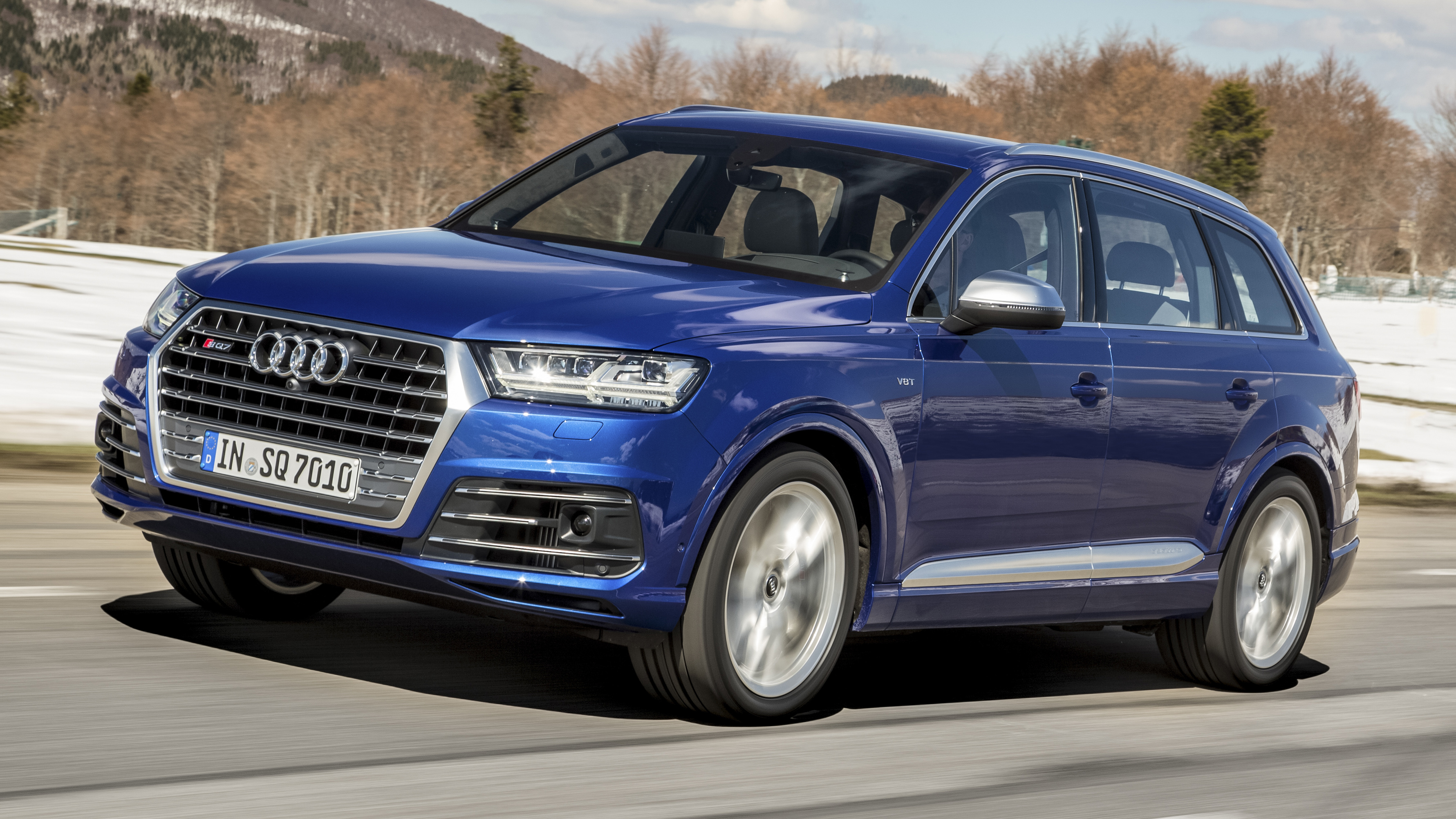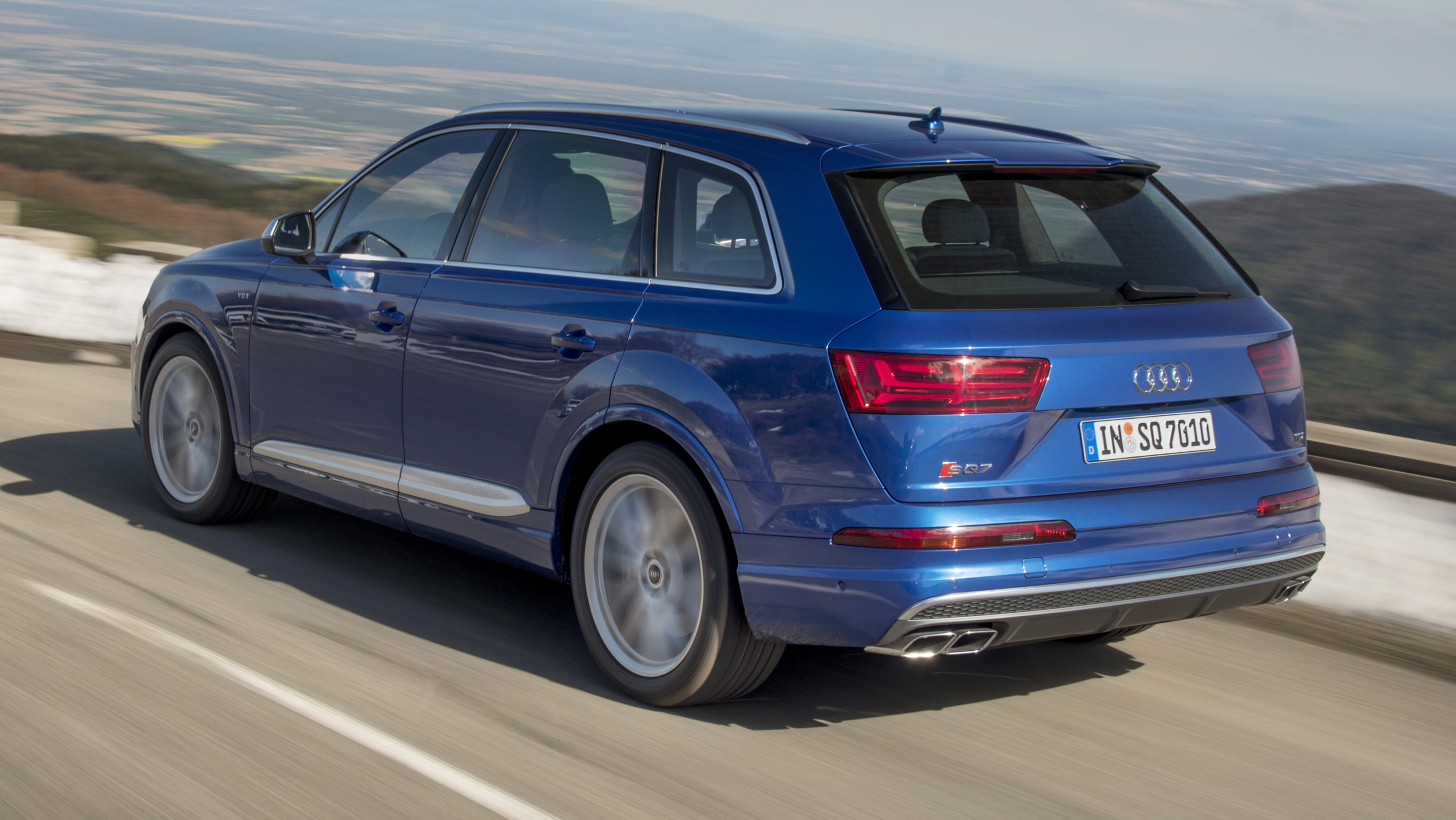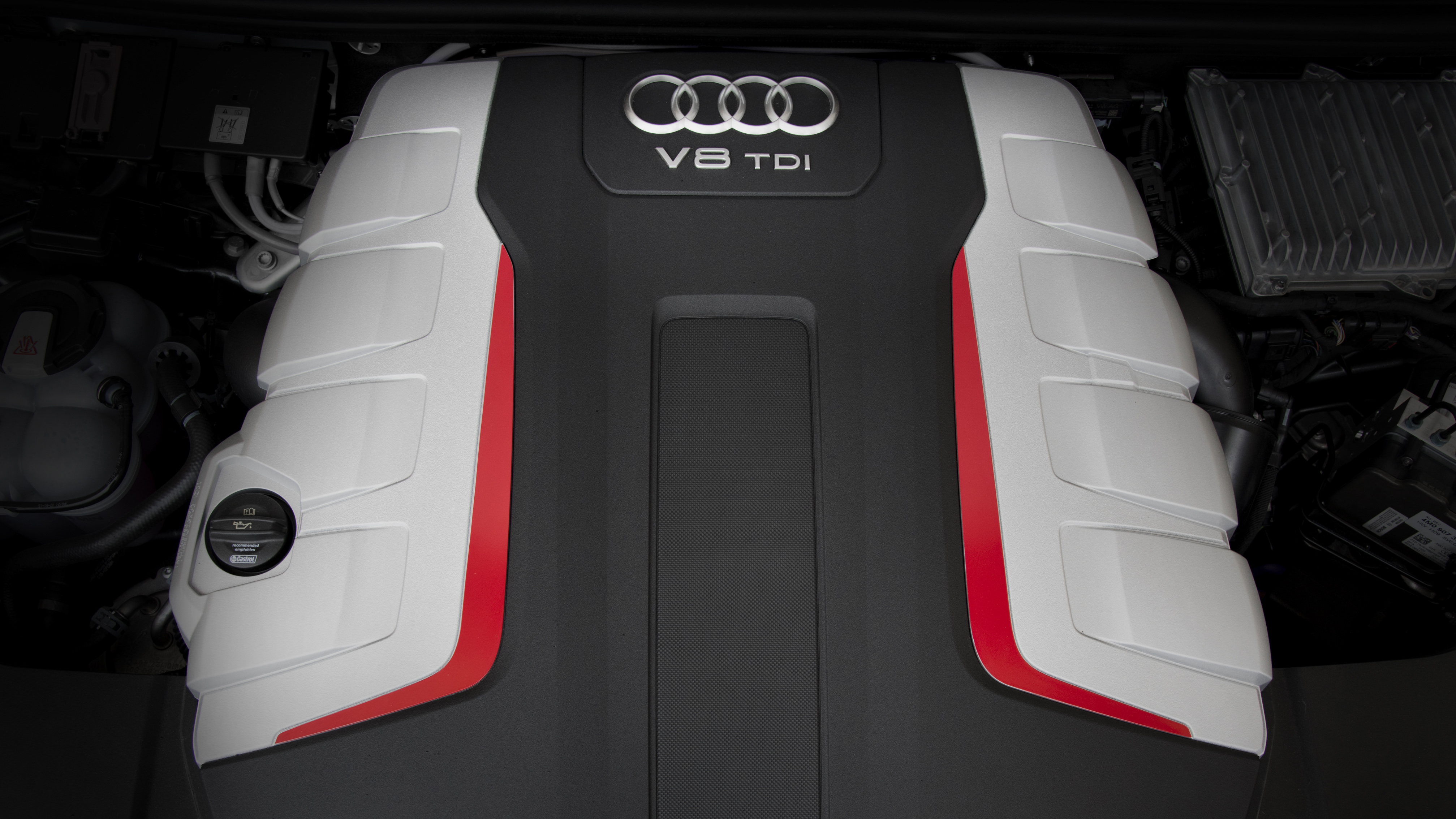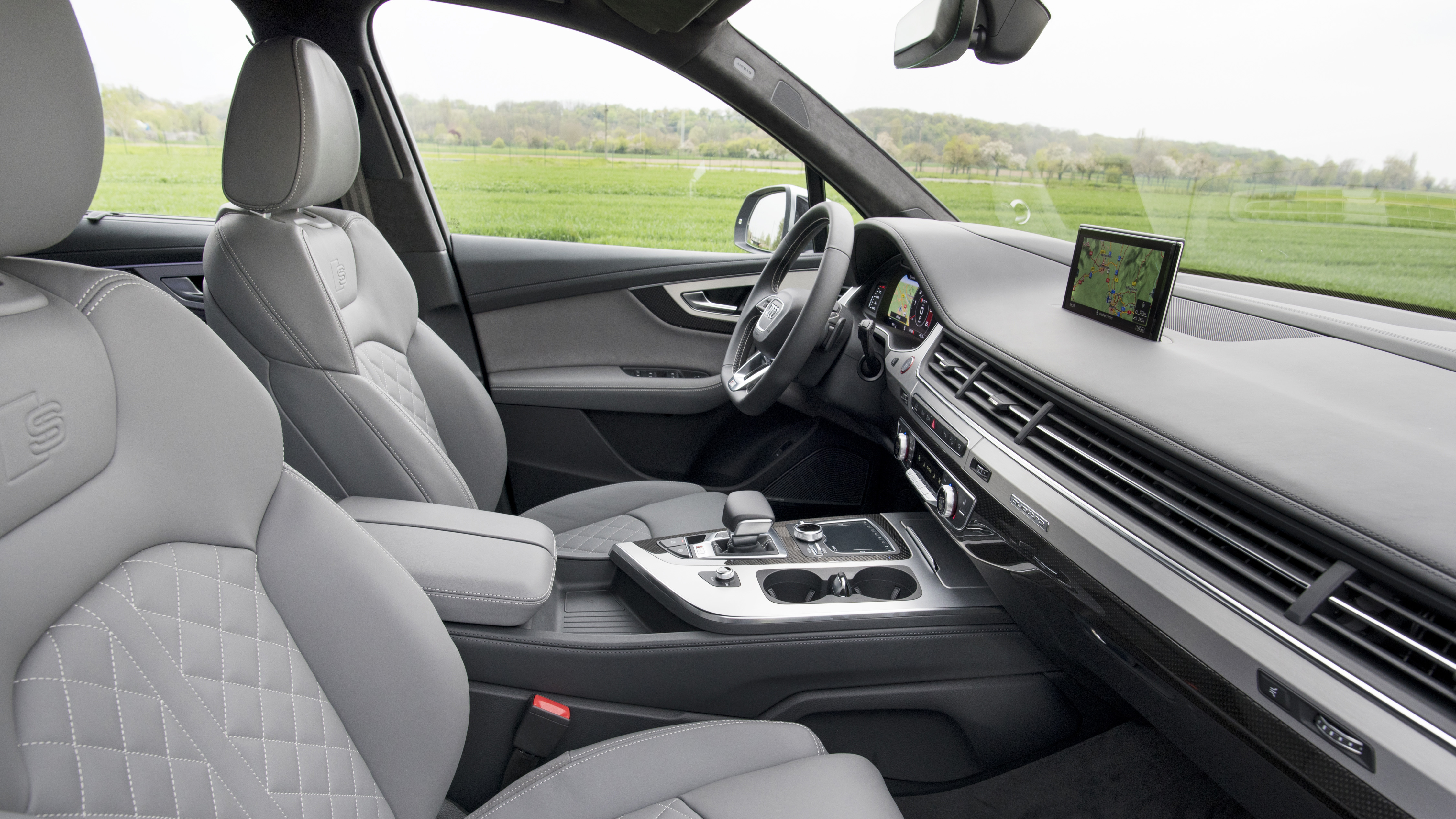
Review: the Audi SQ7 performance SUV
Another crazy-fast SUV?
Quite. This one might look dull – as, let's face it, do all Audi Q7s – but it has some very interesting tech underneath. Possibly quite important too. And it's fast. And it's one of the more surprising fast Audis.
OK, give me the fast stats first.
How about 435 horsepower, 664lb ft of torque and a 0-62mph time of 4.9 seconds?
Right, you got my attention. And I've now made coffee and am ready for the technical lecture.
First, the engine. It has an electrically driven compressor, rather like the MGU-H of a grand prix engine. We've never seen anything like it on a road car.
The base engine is a new 4.0-litre diesel. There are two vanilla turbos, as well as the novel electrically driven compressor. The sequence goes like this. At low rpm, only one exhaust valve for each cylinder is opening. It feeds a small turbocharger. Normally you'd worry about turbo lag. Audi's solution is the electric compressor. Flatten the accelerator and it very rapidly (a quarter second) spins up the compressor, giving a brief pulse of air to the cylinders while the turbo itself has time to spin up. This little electric pump takes quite a bit of power, 7kW (10bhp), so it runs off 48 volt instead of 12V electricity. When the engine has revved up a bit, the second set of exhaust valves start opening, feeding the bigger turbo. So now you have two puffers, and the engine keeps hauling until a 5000rpm red line.
Phew. And the second thing?
An option on the chassis for adaptive anti-roll bars. These also use 48V actuators, levering this heavy SUV upright for better cornering grip. On straights they decouple themselves, so the ride improves.
What's all this 48V business?
Top Gear
Newsletter
Thank you for subscribing to our newsletter. Look out for your regular round-up of news, reviews and offers in your inbox.
Get all the latest news, reviews and exclusives, direct to your inbox.
Good question. It's going to be important. It will be used in future for all sorts of power-consuming devices. Think autonomous steering, active suspension, mild hybrids, electric cabin heating. If you do that stuff with 12V you need very heavy wiring to avoid substantial losses, or meltdown. It's why the national grid uses high voltages, then steps down to 240V for your house.
And the electric compressor tech is also a candidate to be rolled out onto smaller engines. Audi says it could add performance, or by the same token make cars more economical by allowing longer gearing.
OK, does it work?
Here's a thing. You can still, if you go looking for it, find lag. Out of a very slow hairpin or roundabout, there's still a definite pause before the full drastic slug of torque kicks in. But once you're doing more than 40mph you never notice a delay. So sadly the anti-lag claim is only half proven. But most of the time this engine is pretty remarkable. In a good way. Its exhausts sound like a petrol V8, its sheer performance is borderline brutal in its force, if beautifully mannered. And it delivers the goods from under 1700 to beyond 5000rpm – a three-to-one range. Makes the eight-speed transmission feel a bit superfluous, even if it does do a terrific job in itself.
And what about that surprise you mentioned at the beginning?
Well, you know that bit where we drive a big fast Audi and then complain that the chassis is grippy and safe but a bit boring and unreactive? Well, you're not about to read that. The SQ7 is a bit of a hooligan. First, it needs saying that the test car had a special triple option pack: the 48V anti-roll kit, plus a torque vectoring 'Sport Differential' at the rear, and four-wheel-steering. We didn't get the chance to drive a car without those extras. But with them, you can thumb the menu into 'dynamic' chassis mode and it's ready to party.
Tip the SQ7 into a corner and it hardly rolls, nor yet understeers. Then you can shift the attitude with the throttle. Honestly, lift off a little and it tightens its line. Get back on the power and it clings hard with both ends. Get on the go-pedal very hard very early in a second-gear corner and it will actually power-oversteer. Really.
But it's a seven-seat SUV. Is oversteer a relevant attribute?
Er, no. But driver engagement is always welcome. And it shows – as the R8 shows and indeed the S1 shows – that there are engineers within Audi who know what it means to make a fast car that connects with drivers.
And what about the stuff that actually makes it an SUV fit for normal SUV duties?
The engine is very hushed when you switch off the fruity exhaust button – quiet too through the air and over the tarmac. Thanks to adaptive air springs and that clever ad-hoc anti-roll solution, the ride's remarkably supple too, betrayed only by an element of wheel patter.
And it's a Q7, with all that entails?
Yup. The cabin's made with Audi's usual care, the boot's a cavern, there are electrically folding jump seats for persons six and seven. The new platform is relatively un-heavy, and choc-full of electronic driver-assist and safety technology.
Must be drastically expensive though?
Strangely, no. It's a lot less than a V8 diesel Range Rover Sport, f'rinstance. And faster. The base price is £70,970, including connected navigation, virtual instruments, hi-res MMI, full-LED headlights, four-zone climate, reversing camera and 20s. You'll need about an extra £7000 for that clever chassis package, mind.
Featured

Trending this week
- Car Review
Porsche 911 GT3 (992.2)








